Photos courtesy of Ausra Lanzdiene
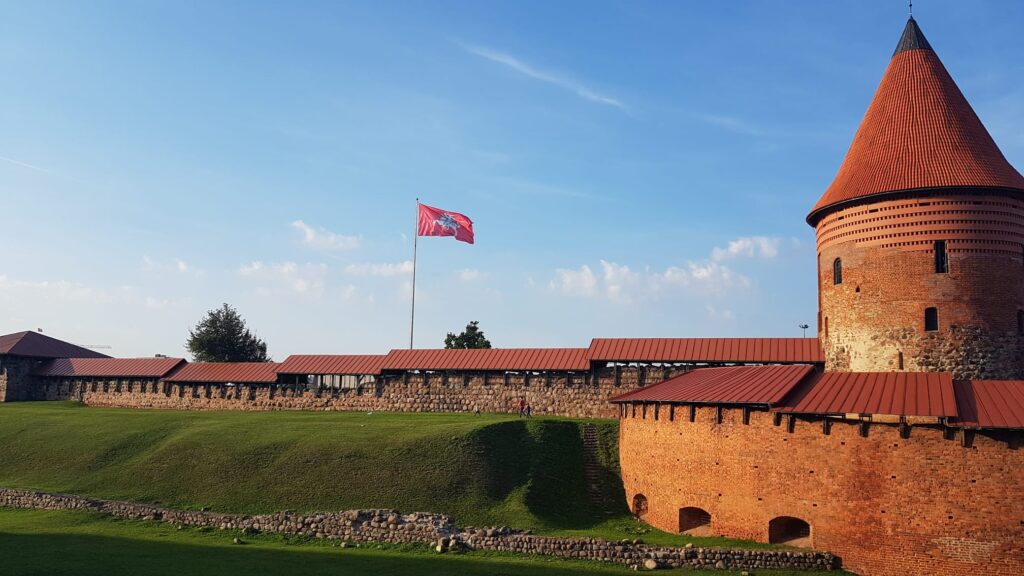
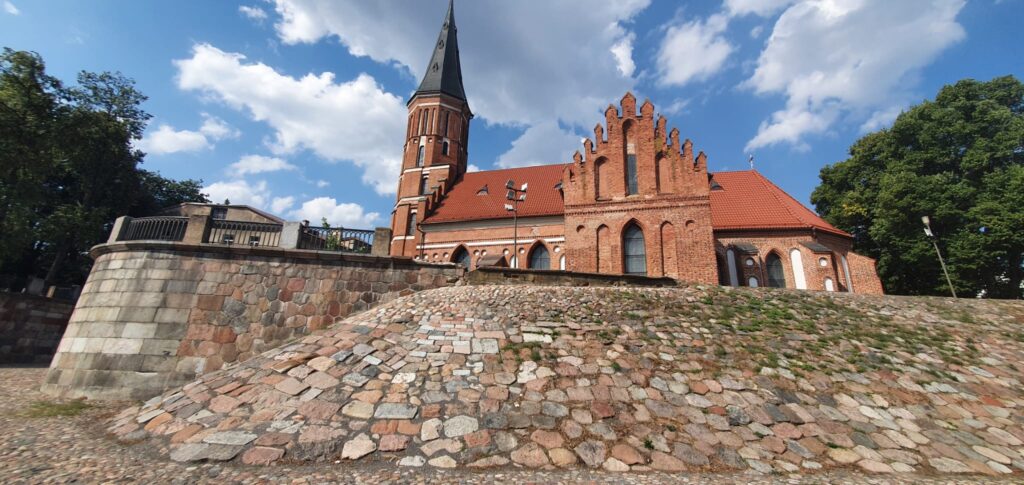
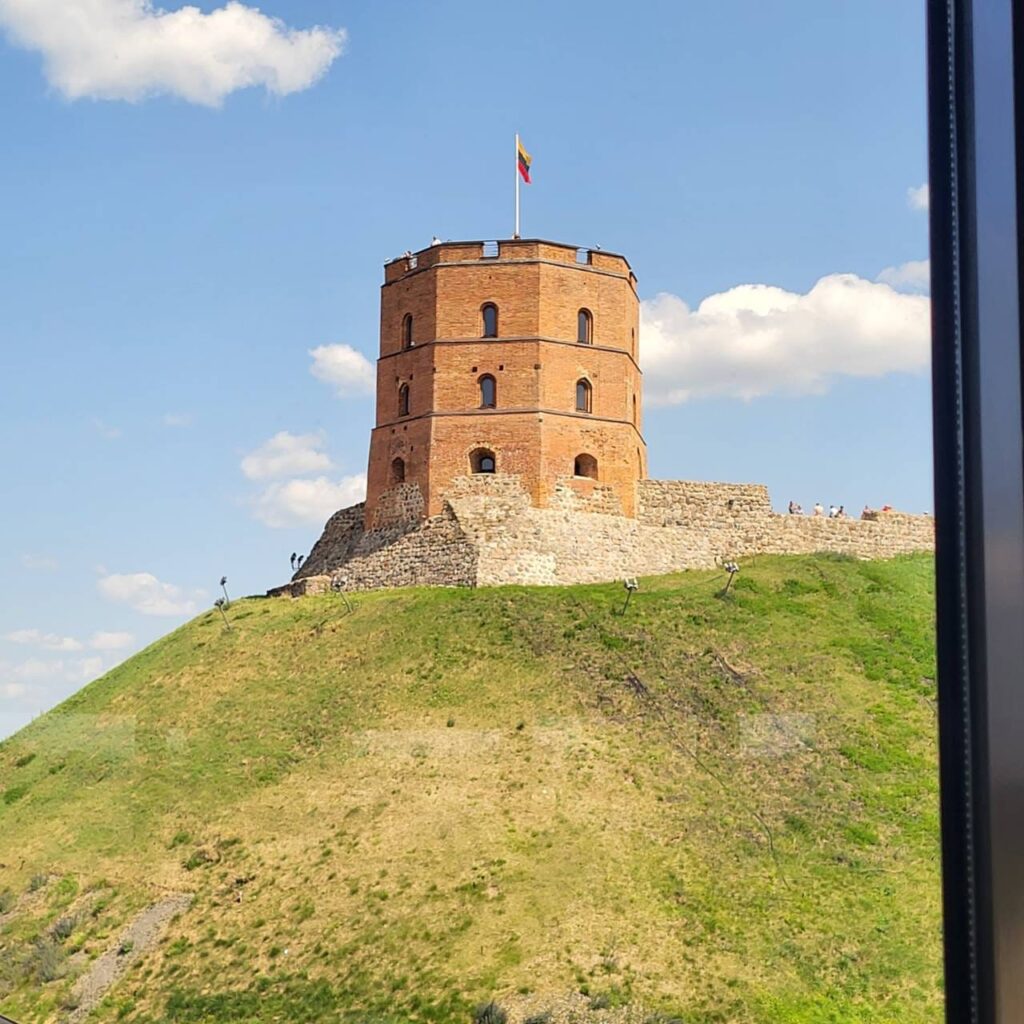
| KAUNAS | VILNIUS |
| Kaunas is the second-largest city in Lithuania and was the temporary capital during the interwar period. As of 2021, Kaunas had a population of around 280,000 to 300,000 people, approximately half the population of Vilnius. | Vilnius is the capital and largest city of Lithuania. It has historically been the most populous city in the country. As of 2021, Vilnius had a population of around 550,000 to 600,000 people, making it the most populous city in Lithuania. |
| Kaunas is situated more centrally in Lithuania. It covers an area of around 157 square kilometers (61 square miles). | Vilnius is located in the southeastern part of Lithuania. It covers an area of approximately 401 square kilometers (155 square miles). |
| Kaunas primarily language is Lithuanian. Strong emphasis to Lithuanian culture | Vilnius is multicultural, spoken Lithuanian, Russian, Polish, Belarussian, Yiddish |
| Vytautas Magnus University founded 1922 | Vilnius University, one of the oldest in Europe, Founded April 1, 1579 |
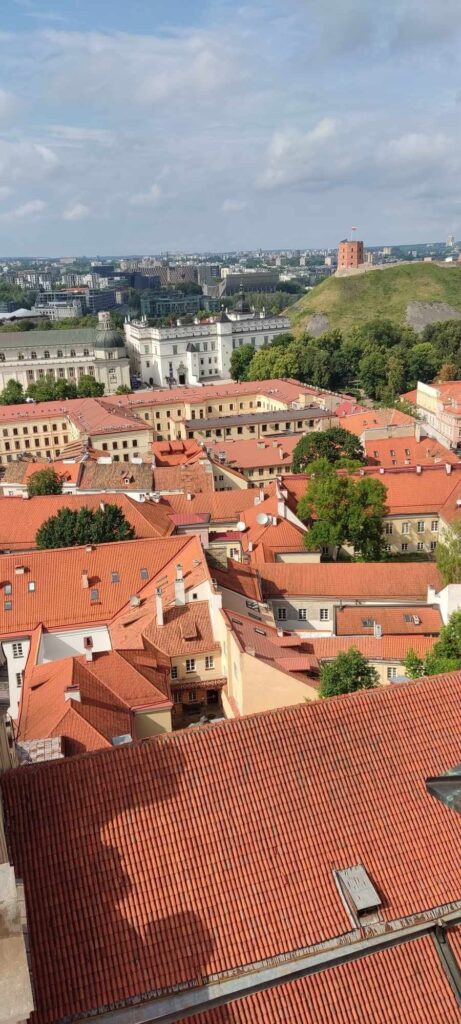
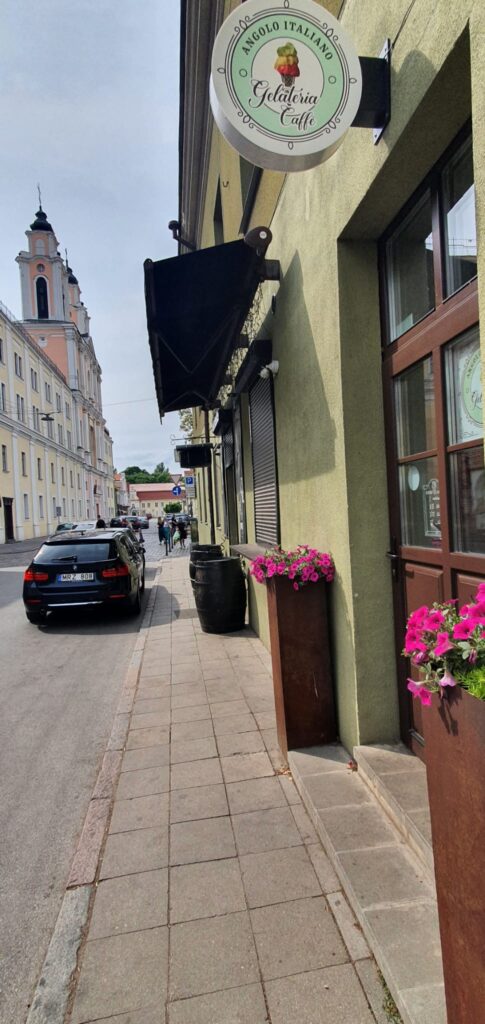
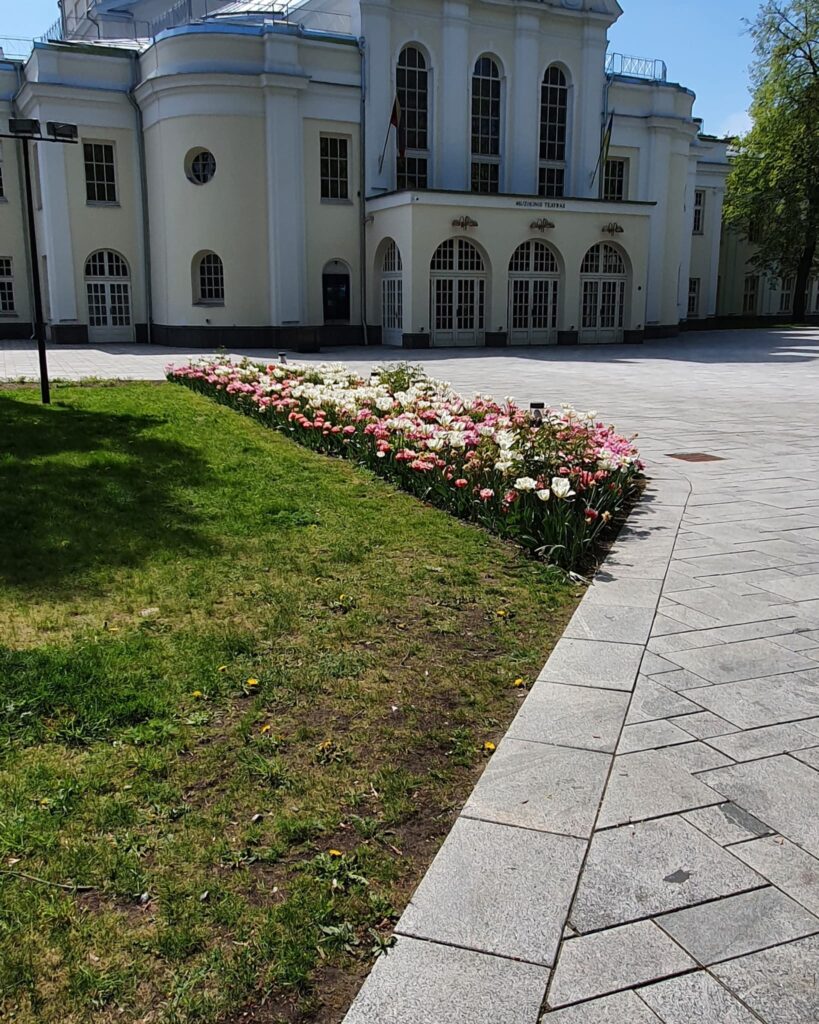
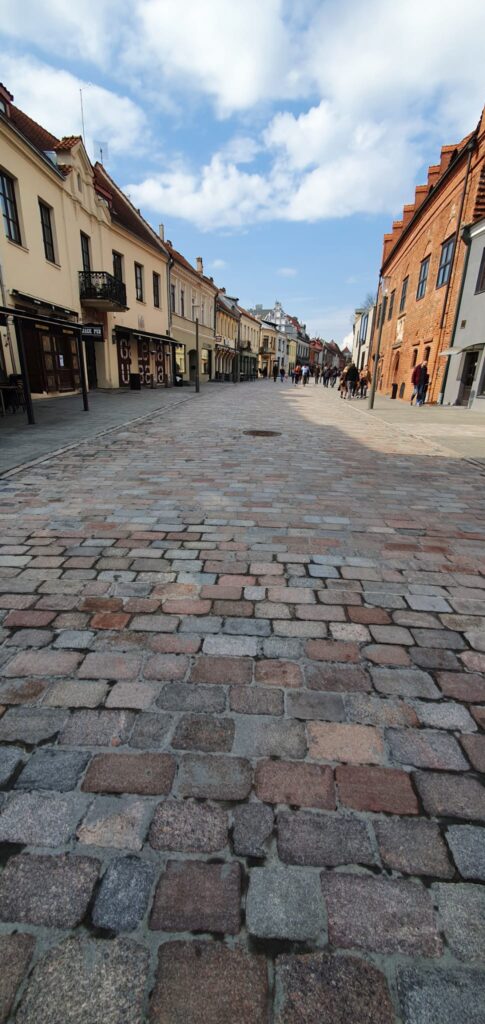
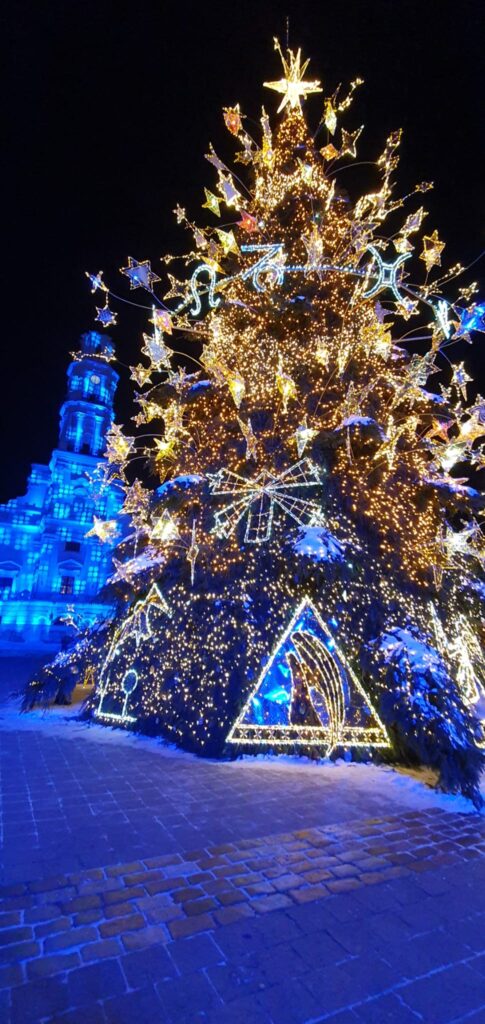
Historical Capitals: Vilnius: The Historical Capital
Vilnius, often referred to as the “Jerusalem of the North,” has a rich and diverse history dating back to the medieval era. It emerged as a significant center of trade, culture, and religion in the Grand Duchy of Lithuania, one of the largest and most powerful states in medieval Europe. The city’s strategic location facilitated its growth as a hub for commerce and diplomacy, connecting Western and Eastern Europe. During the late Middle Ages, Vilnius experienced an influx of various ethnic and religious groups, contributing to its multicultural character. It became an important center of learning and culture, with the establishment of Vilnius University in 1579, one of the oldest universities in the region. The city’s architecture displays a blend of Gothic, Renaissance, Baroque, and later styles, reflecting its historical diversity.
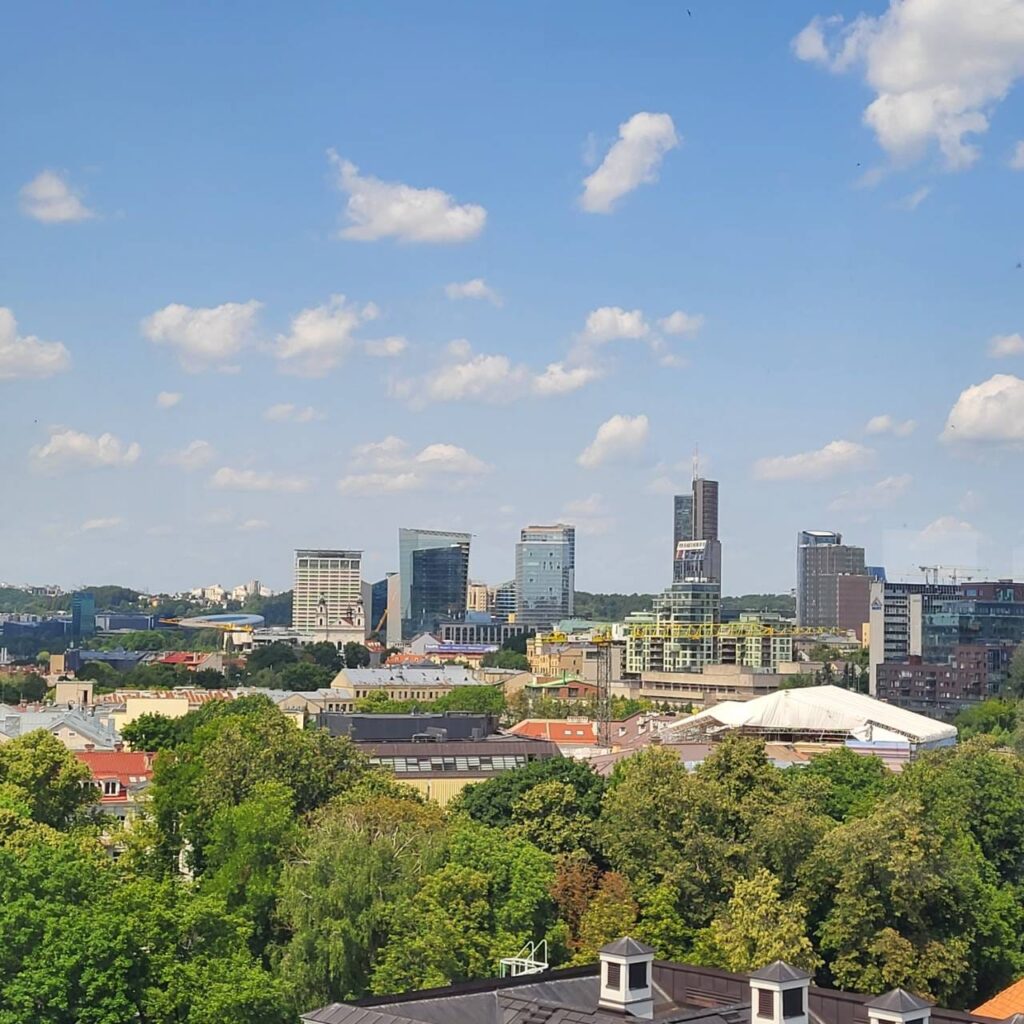
Kaunas: The Temporary Capital
The 20th century brought significant political changes to Lithuania. After World War I and the collapse of empires, Lithuania declared its independence in 1918. However, due to territorial disputes with Poland, Vilnius, a historically Lithuanian city, was under Polish control. In this context, Kaunas was chosen as the provisional capital in 1919. During the interwar period (1919-1940), Kaunas played a critical role as the political and administrative center of Lithuania. It hosted government institutions, foreign embassies, and cultural events. The city experienced a burst of urban development and modernization during this time, and significant infrastructure projects were undertaken. Notably, the architecture of the period reflects a mix of various styles, including functionalism and art deco.
The interwar period, when Kaunas acted as the temporary capital, created a dynamic of competition and rivalry between Vilnius and Kaunas. Vilnius remained a cultural and historical symbol, even though it was not the administrative capital. The aspiration to regain Vilnius and the title of the capital intensified the significance of the rivalry.
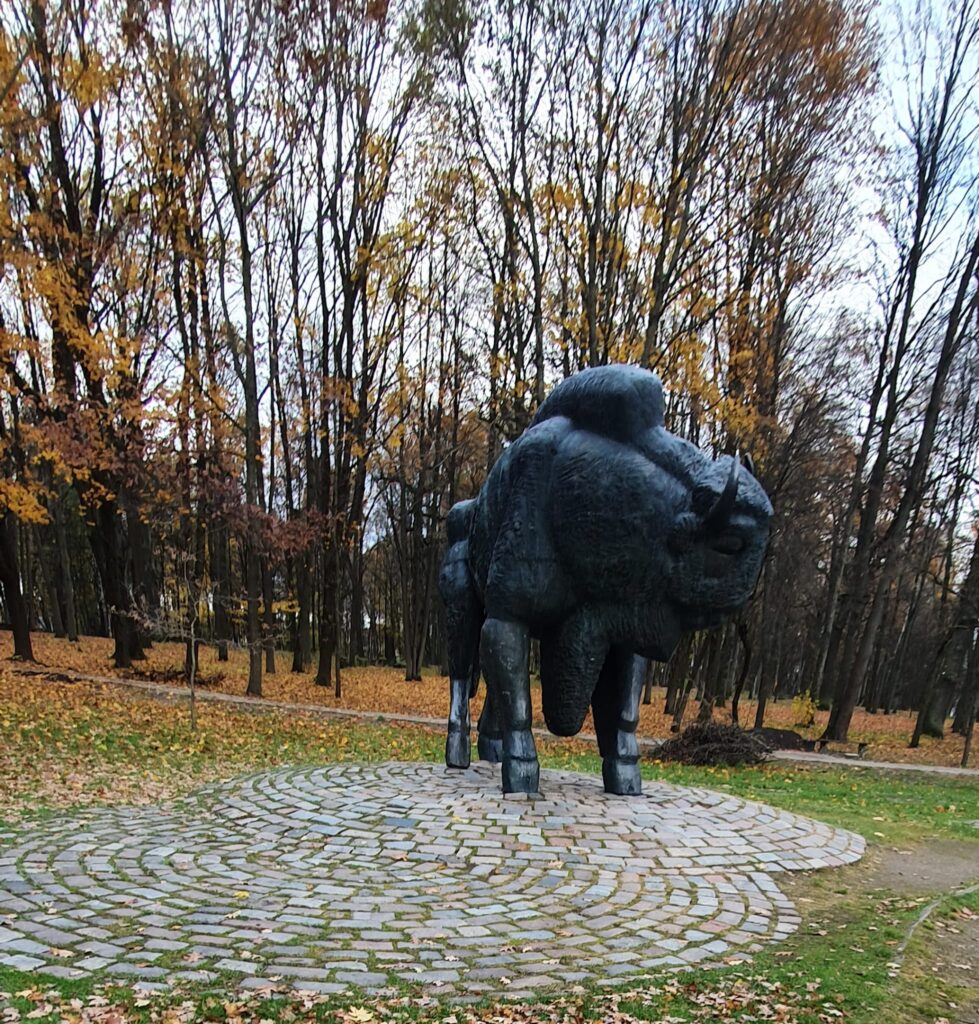
The Shifting Capital and Historical Dynamics
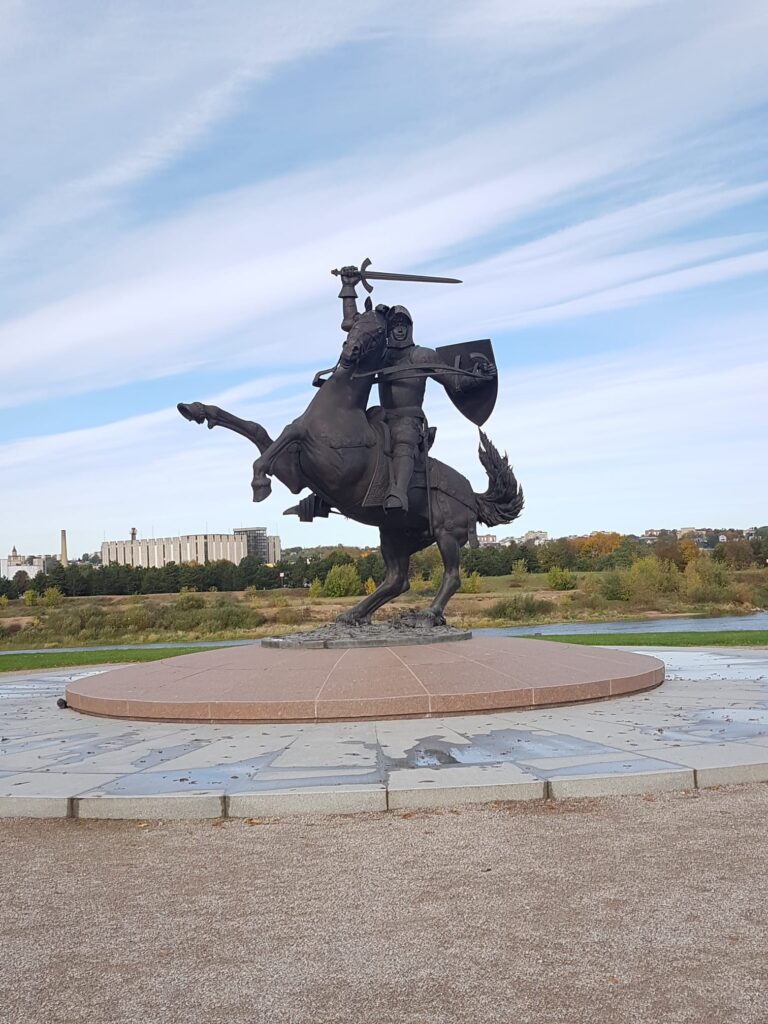
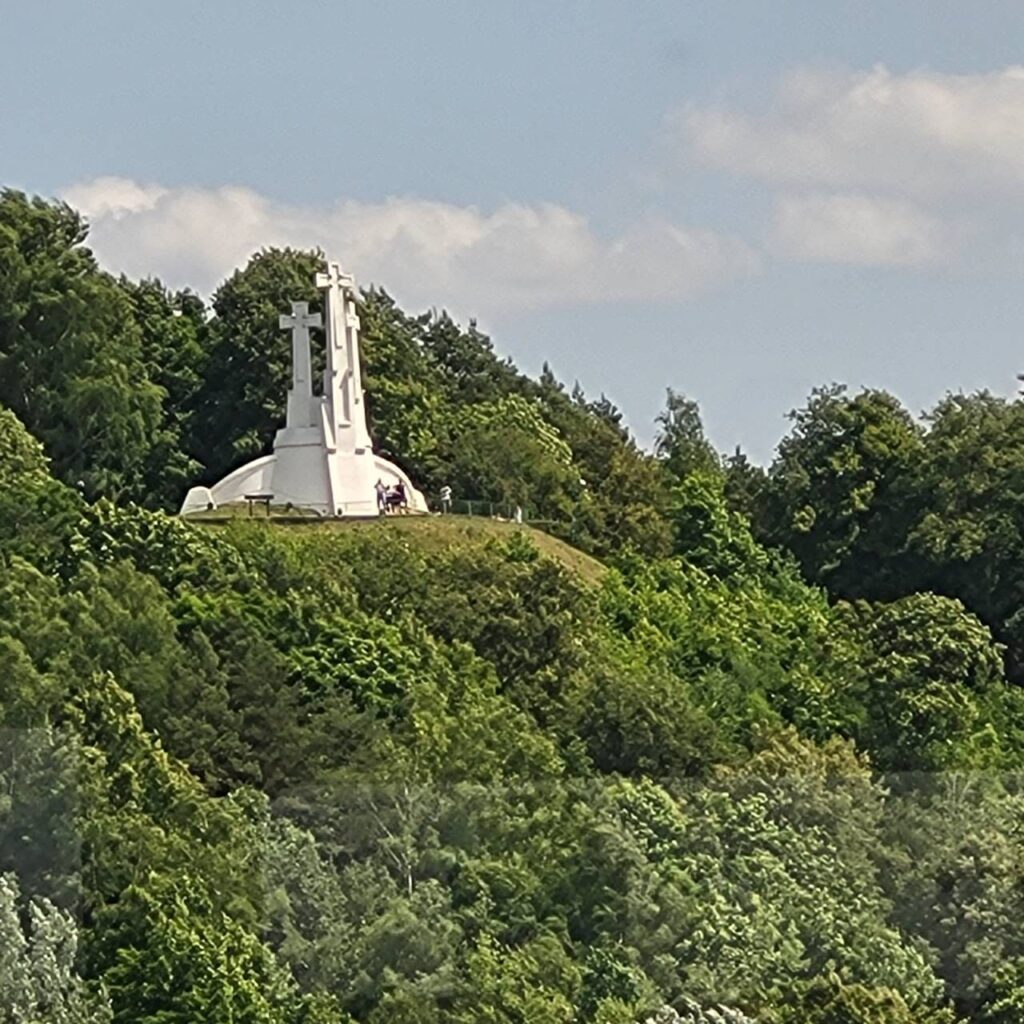
The concept of a capital city goes beyond administrative and geographical functions; it carries profound symbolic, cultural, and national significance. Vilnius, as the historic capital of the Grand Duchy of Lithuania, held immense cultural and political importance. It represented the heart of Lithuanian identity, the epicenter of intellectual and artistic achievements, and the seat of political power during much of Lithuania’s history. However, the shifting of the capital to Kaunas during the interwar period marked a significant departure from this historical norm. As political circumstances demanded, Kaunas stepped into the role of a temporary capital, serving as the administrative center during a crucial phase of the country’s history. This decision was pragmatic, driven by geopolitical realities, yet it introduced a competing narrative about Lithuania’s central identity.
The temporal transfer of the capital to Kaunas engendered a complex interplay between the two cities, giving rise to competing narratives about Lithuania’s core identity. Vilnius continued to be revered as the cultural and historical nucleus, while Kaunas developed its own significance as the center of governance and administration.
The rivalries between Vilnius and Kaunas often revolve around questions of authenticity, heritage, and national essence. For Vilnius, it is a matter of preserving the legacy of a longstanding capital with deep cultural and historical roots. For Kaunas, it is about asserting its contribution to the country’s political development during a critical juncture and validating its role as a capital in its own right.
Even as Lithuania regained Vilnius and it was reinstated as the capital after World War II, the interplay of history and political dynamics continues to influence perceptions and attitudes. The historical precedent of Kaunas as a capital adds depth to its contemporary identity as a cultural and academic hub. Vilnius, in turn, remains a center of political power, while also embracing its status as the historical heart of Lithuania.
Vilnius: A Multicultural Melting Pot:
Vilnius, with its centuries-old history and strategic location at the crossroads of Eastern and Western Europe, has earned its reputation as a multicultural melting pot. Throughout history, it has been home to various ethnic groups, cultures, and religions. This diversity has enriched the city’s cultural fabric, leaving an indelible mark on its architecture, traditions, and social dynamics.
Historical Heritage: Vilnius’ historical heritage weaves a captivating tapestry of architectural styles and religious diversity, beautifully reflecting its multicultural past. The city’s buildings stand as living witnesses to the coexistence of cultures, faiths, and artistic influences that have enriched its history.
From the intricate details of its Gothic masterpieces like St. Anne’s Church and the Church of St. Francis and St. Bernard, to the elegance of Renaissance architecture seen in the Royal Palace and Presidential Palace, Vilnius embodies a spectrum of artistic expressions.
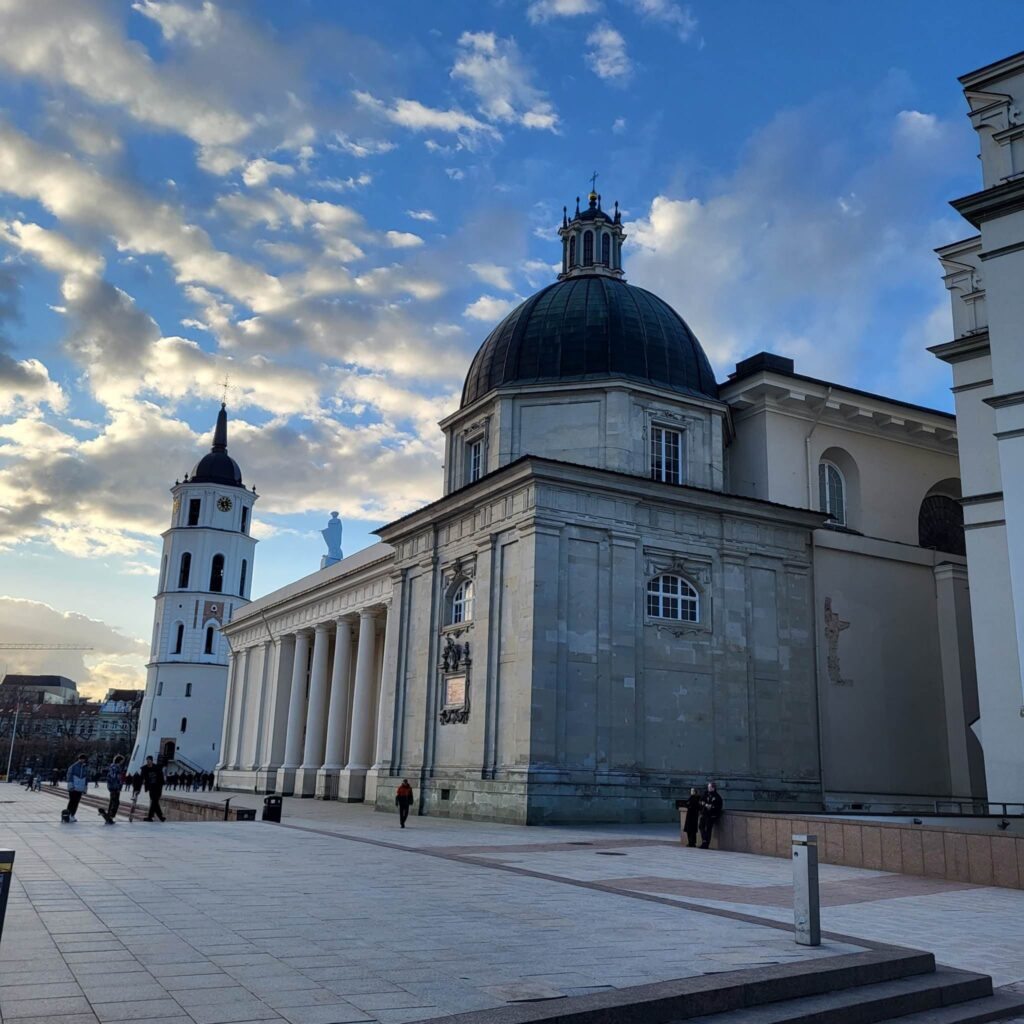
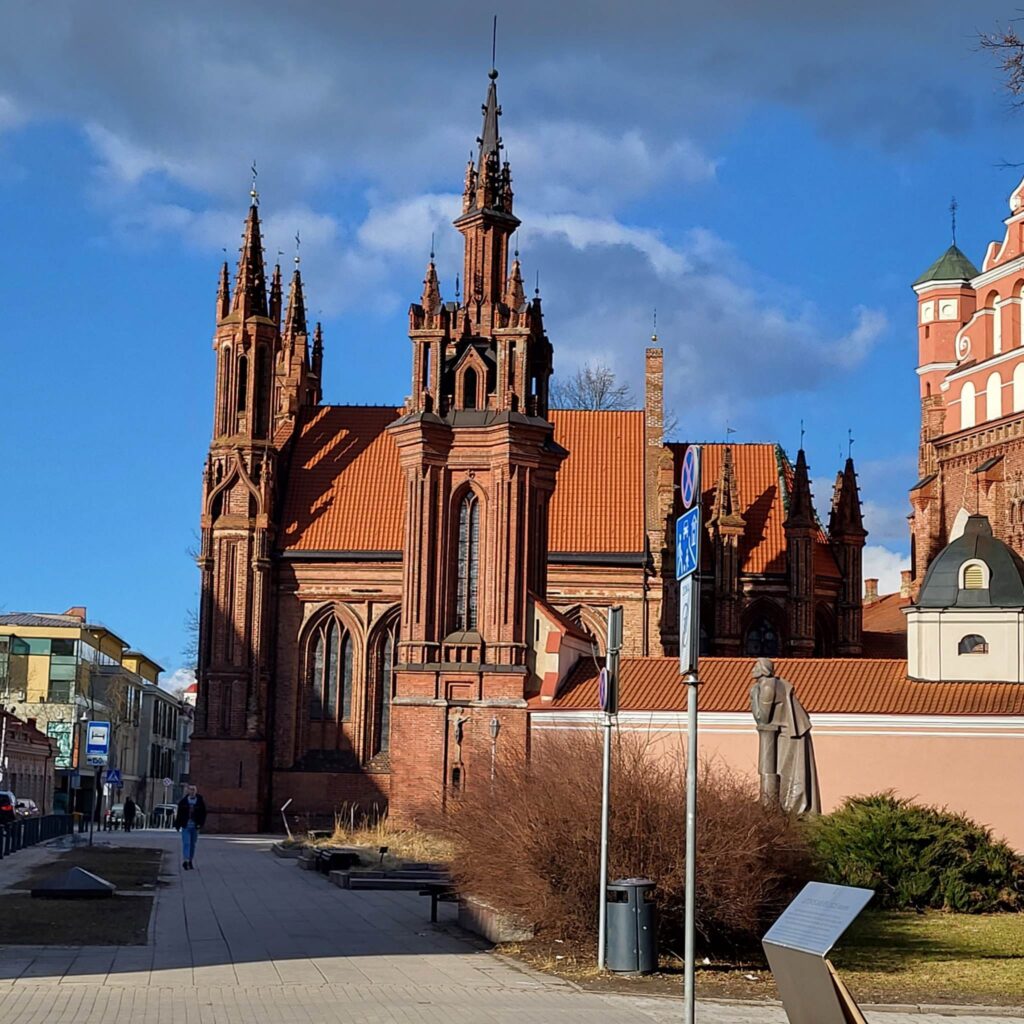
The Baroque era’s lavish touch is evident in the Church of St. Peter and St. Paul, an epitome of Lithuanian Baroque with its ornate façade and opulent interior. Synagogues, each a unique gem, mirror the city’s status as the “Jerusalem of the North,” paying homage to its historic Jewish community.
Notably, Eastern Orthodox and Islamic architectures also grace Vilnius. The Russian Orthodox Church of the Holy Spirit and the Kazan Mosque further amplify the city’s vibrant religious tapestry.
The Gate of Dawn, with its revered image of the Blessed Virgin Mary, embodies the city’s inclusive spirit, welcoming people of all faiths. Vilnius University’s stately buildings symbolize education and culture, adding depth to the city’s narrative.
Amidst Vilnius’ enchanting Old Town, a UNESCO World Heritage site, narrow alleys unveil surprises—a hidden chapel here, a quaint courtyard there—showcasing a city that embraces its diverse histories.
Vilnius’ commitment to preserving this architectural mosaic underscores its identity as a place where centuries of coexistence, tolerance, and artistic brilliance are cherished. Its buildings stand not just as structures, but as living witnesses to the people, faiths, and cultures that have shaped the city’s captivating and inclusive essence.
Religious Tolerance: Vilnius, steeped in history, stands as a testament to the power of religious tolerance. This city, often hailed as the “Jerusalem of the North,” has woven together a tapestry of faiths, fostering an atmosphere where diverse religious communities not only coexisted but thrived side by side. Through the ages, Vilnius embraced Judaism, Christianity, and Islam, among others, as integral parts of its cultural landscape. The city’s streets bear witness to this harmonious coexistence, with synagogues, churches, and mosques standing in close proximity, a testament to the city’s welcoming embrace of different beliefs. Vilnius’ heritage goes beyond mere coexistence. It facilitated vibrant intellectual exchanges, drawing scholars and thinkers from various backgrounds to engage in dialogues that enriched the city’s reputation as a center of learning and cultural exchange.
In celebrating its religious diversity, Vilnius echoes a profound message: the power of unity within diversity. The city’s legacy of acceptance is a beacon of hope, reminding us of the potential for harmonious living despite differences. As Vilnius continues to honor its multicultural heritage, it carries forward this legacy of tolerance, affirming the significance of fostering an environment where a symphony of beliefs can coalesce, creating a richer and more profound human experience for all.
Cultural Centers: Vilnius, a city steeped in cultural and intellectual significance, has radiated as a beacon of learning and artistic brilliance throughout history. Its role as a center of education and creativity has left an indelible mark on both its identity and the broader European cultural landscape. At the heart of Vilnius’ intellectual legacy stands Vilnius University, founded in 1579—a testament to the city’s commitment to knowledge dissemination.
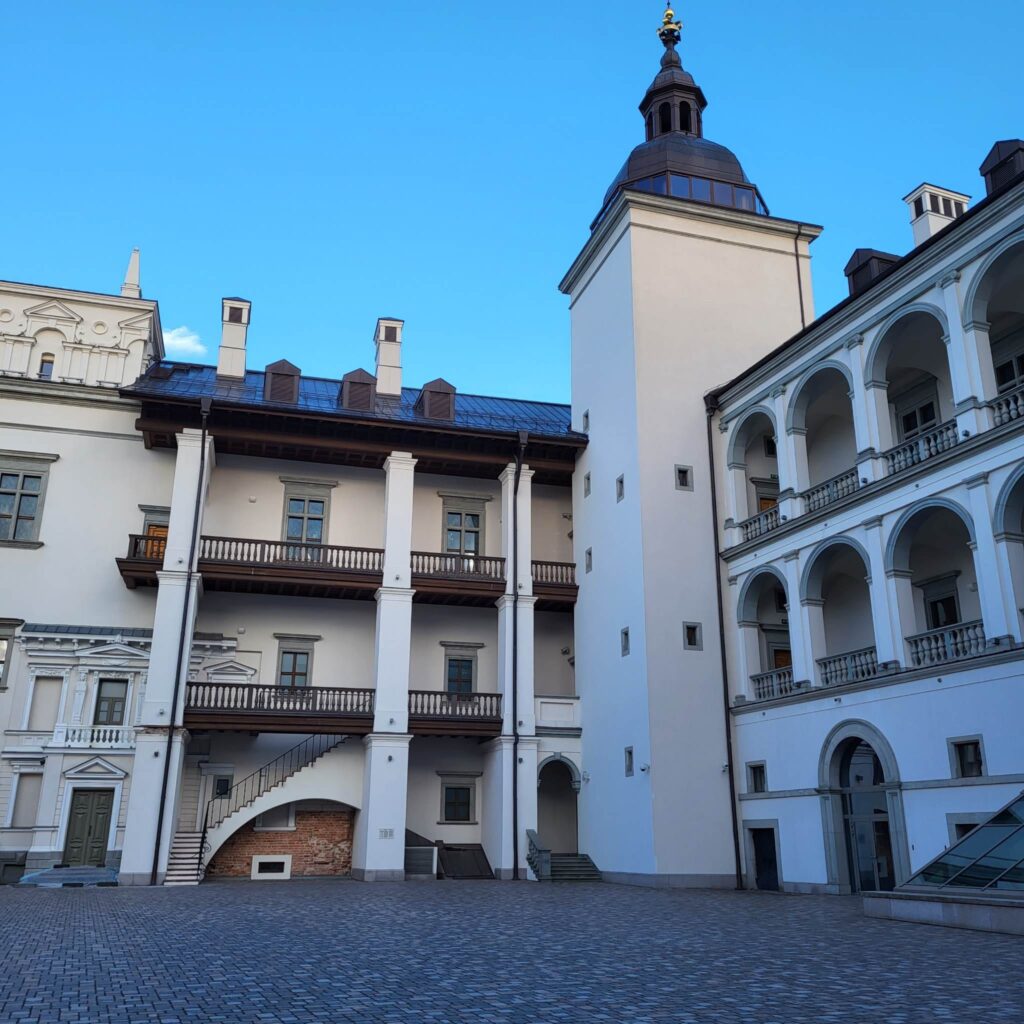
This institution drew scholars and students from across Europe, fostering an environment of vibrant intellectual exchange. Beyond academia, Vilnius has nurtured artistic and literary movements that resonate far beyond its borders. The Vilnius Romantic School of the 19th century, with luminaries like Adam Mickiewicz, exemplified the city’s influence in shaping national literary identity. Vilnius’ appeal as a cultural haven attracted thinkers, scholars, and artists from diverse corners of Europe. This convergence led to a dynamic cultural exchange, enriching the city’s character and leaving an enduring impact on its identity. Today, Vilnius remains committed to its role as a cultural nucleus. Its historic landmarks, museums, galleries, and vibrant cultural events not only honor its heritage but also create an environment where innovation and intellect continue to flourish. Vilnius’ legacy resonates as a testament to the transformative power of education, creativity, and cultural exchange. It stands as a symbol of how a city’s dedication to intellectual enrichment can transcend time and borders, shaping the trajectory of knowledge and art across generations.
Linguistic Diversity: Vilnius thrives as a melting pot of languages. Among its linguistic array, several languages stand out as markers of the diverse influences that have shaped the city’s identity. Reflecting historical ties with neighboring Poland, the Polish language and its cultural nuances are interwoven into the city’s fabric. The resonance of Yiddish speaks to Vilnius’ vibrant Jewish community, once a significant presence in the city. Positioned near the borders of Belarus, Vilnius carries the echoes of the Belarusian language as a reminder of its proximity to yet another cultural realm. A relic of its past as part of the Russian Empire, the Russian language serves as a thread connecting Vilnius to a broader historical narrative. The beauty of Vilnius’ linguistic diversity is not just in the variety of languages spoken, but in the harmony with which they coexist. The city’s streets have long been a meeting place for different cultures and ethnicities, a crossroads where languages have intermingled and sparked intellectual, artistic, and cultural exchanges. This multilingual landscape isn’t merely a product of the past; it’s a living heritage, a testament to the city’s commitment to preserving its roots and the identities of its inhabitants. These languages embody the history of the people who have called Vilnius home, carrying with them stories, traditions, and experiences. In contemporary Vilnius, the echoes of these languages continue to reverberate. They remind us that the city’s heritage is alive and evolving, an integral part of the urban landscape. Vilnius embraces the linguistic diversity that has shaped its history, embracing change while upholding its cultural ethos. Vilnius stands as a symbol of unity through diversity, a city that has not only welcomed different languages but has celebrated them as conduits of human expression. These languages are a reminder that beyond the bricks and mortar, it’s the voices, stories, and languages that truly give Vilnius its identity—a city where cultures converge, languages harmonize, and history is preserved in the spoken word.
Kaunas: A Focused Lithuanian Identity
Kaunas, assuming the role of Lithuania’s temporary capital during the interwar period, stands as a testament to the nation’s resilience and determination to shape its cultural identity. This pivotal era, characterized by fervent nation-building and the steadfast assertion of Lithuania’s distinctiveness, left an indelible imprint on Kaunas, forging its character as a city deeply rooted in the nation’s aspirations. The interwar period, spanning from 1919 to 1940, unfolded against a backdrop of transformative global shifts and a newly regained independence for Lithuania. With Vilnius under Polish control, Kaunas took on the mantle of the capital, stepping into the role with a sense of purpose that reverberated throughout the city. This era saw the emergence of a cultural renaissance as Kaunas became the canvas for artists, writers, and intellectuals to nurture Lithuanian culture and art. Language and literature experienced a resurgence, with the use and promotion of the Lithuanian language being pivotal to asserting national identity within Kaunas’ literary circles. The transformation into a temporary capital bolstered Kaunas’ status as an educational hub, exemplified by institutions like Vytautas Magnus University, where education became intertwined with the journey of defining a national character. The city’s developmental projects went beyond physical infrastructure, reflecting a nation crafting its identity through museums, public spaces, and urban planning that resonated with Lithuanian heritage. The legacy of Kaunas as the temporary capital continues in its architectural fabric, cultural institutions, and the spirit of its inhabitants. The cityscape bears witness to modernist and national architectural trends of that era, while Kaunas remains a cultural hotspot with theaters, museums, and galleries celebrating and promoting Lithuanian creativity. Today, as Kaunas embraces modernity while honoring its history, the echoes of the interwar period inspire, reminding the world of a city that stood strong in the face of change, contributing profoundly to Lithuania’s cultural tapestry.
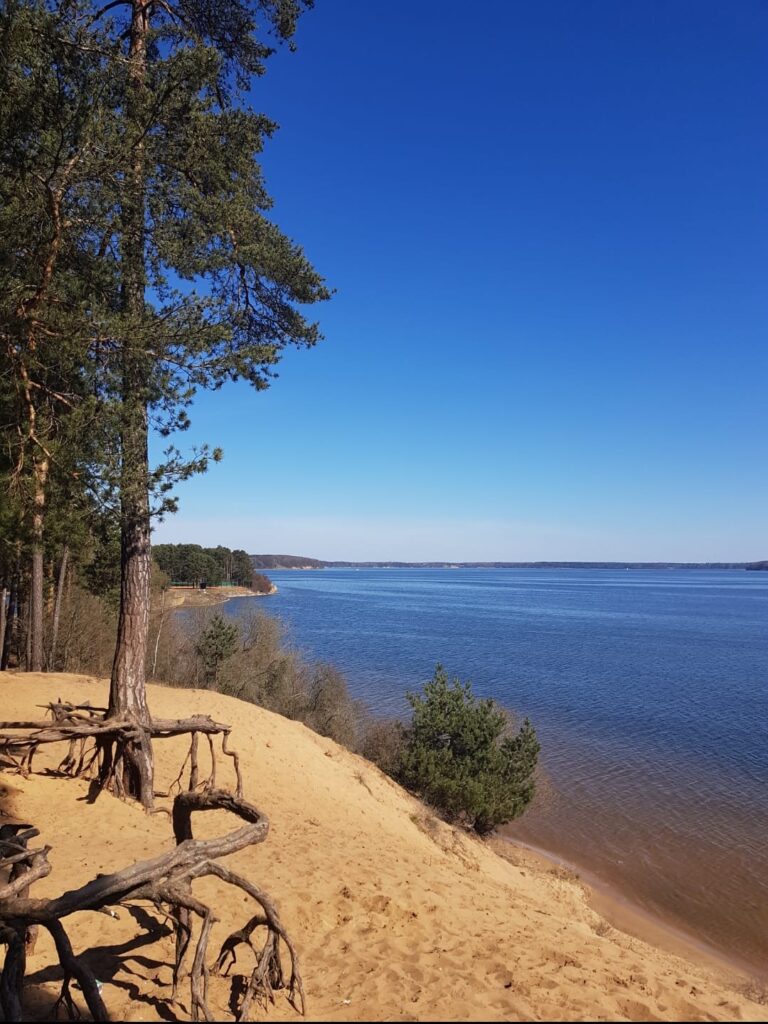
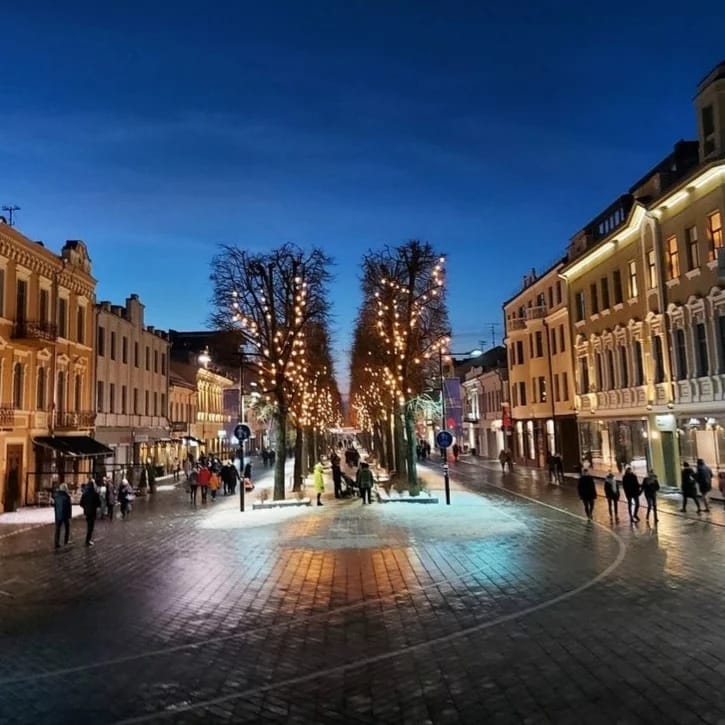
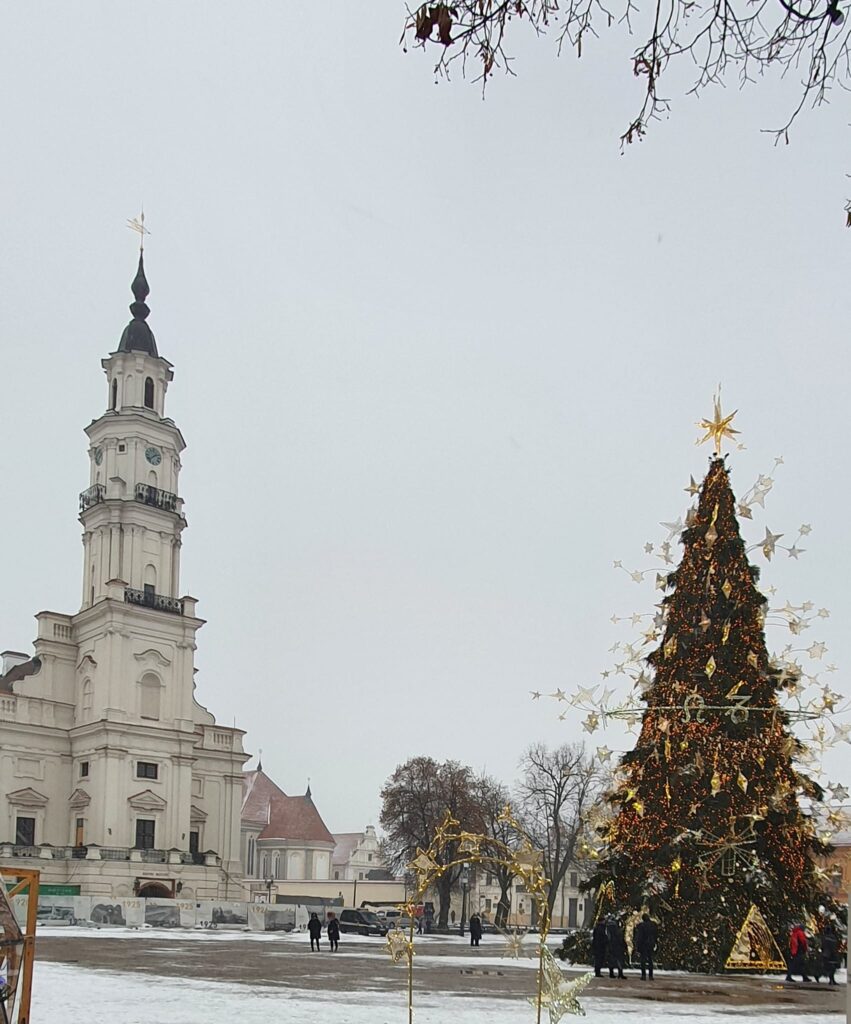
National Pride: In the interwar period, Kaunas emerged as the heart of Lithuania’s political and administrative efforts, actively reinforcing a profound sense of national pride and identity. The city served as the epicenter of the nation’s aspirations, demonstrating a resolute commitment to forging its unique Lithuanian identity. During its designation as the temporary capital from 1919 to 1940, Kaunas assumed a pivotal role, surpassing mere administrative duties to symbolize the nation’s unwavering determination to establish its sovereignty.
Kaunas was not merely a bureaucratic center; it stood as a beacon of hope for Lithuania’s yearning for statehood. The city embodied the collective will of the people to assert their distinct identity, transcending its geographical status to become an embodiment of the nation’s shared spirit. Kaunas’ prominence extended beyond administrative functions; it united citizens under a common purpose, fostering a renewed cultural vigor that infused national pride into the arts, literature, and education.
The legacy of Kaunas as the locus of political and administrative authority resonates deeply within Lithuania’s national narrative. It stands as the foundation of the nation’s statehood, an emblem of its struggle, and a testament to the determination that shaped Lithuania’s course. Today, as Kaunas continues its journey of evolution, the legacy of its pivotal role remains a vibrant source of national pride. It reminds us that cities are more than geographical entities; they carry the indomitable spirit of a people’s identity and aspiration.
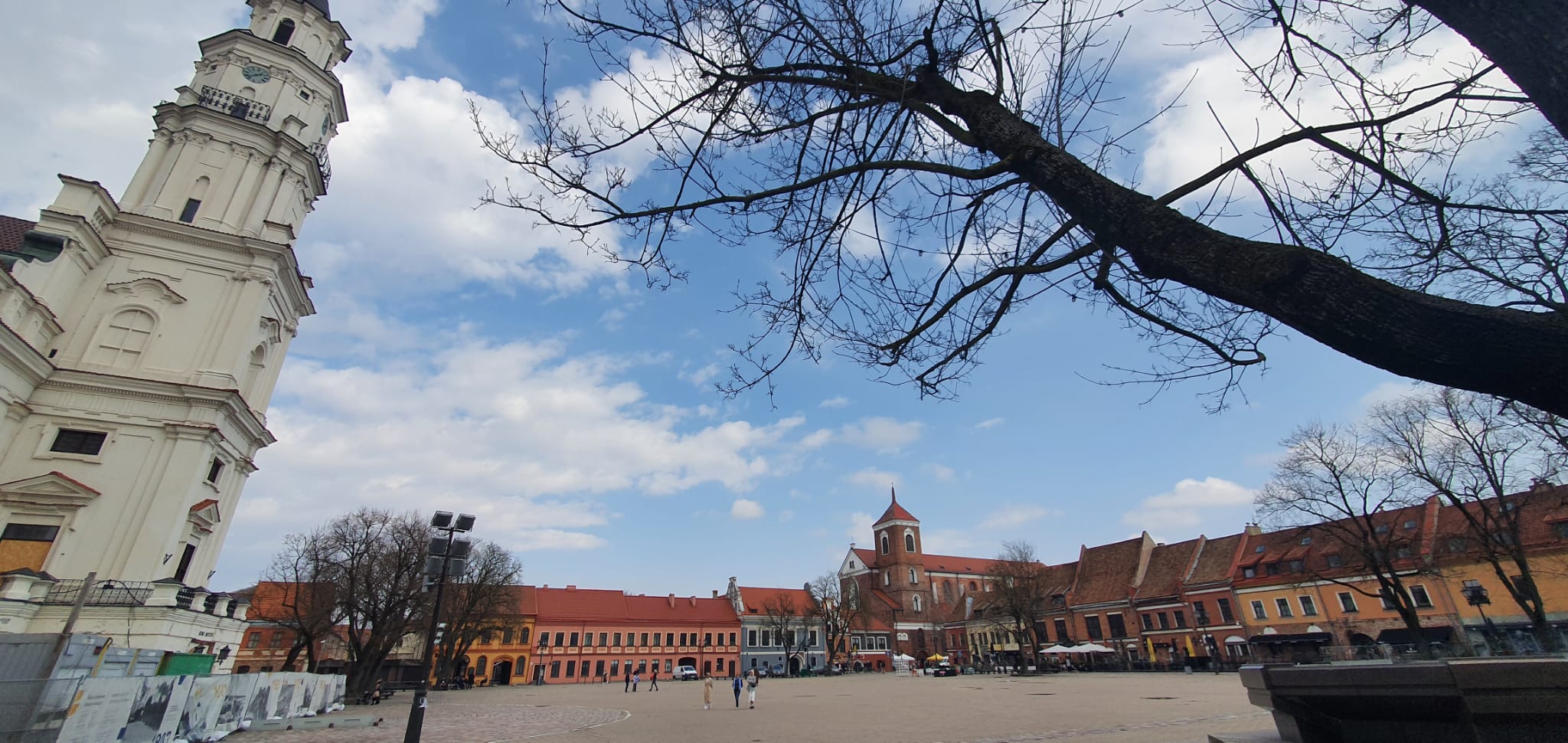
Cultural Development: During the interwar period, Kaunas underwent a cultural renaissance that etched an enduring identity onto the city’s fabric. This pivotal era was defined by a dedicated focus on cultivating Lithuanian culture, literature, and art, leading to a resurgence of creative energy that reverberated throughout Kaunas. The city’s cultural scene flourished as Lithuanian traditions and heritage took center stage, fostering a renewed appreciation for the nation’s roots. This era witnessed the blossoming of Lithuanian literature, with the written word becoming a torchbearer of the nation’s narrative.
Underpinning this cultural revival was the recognition of the profound value of heritage. Kaunas became a hub where art and expression were interwoven with the essence of Lithuanian history, architecture, and identity. Educational institutions like Vytautas Magnus University stood as pillars of this movement, nurturing not only intellect but also a sense of national self. This cultural flourishing wasn’t confined to the artistic realm; it transcended to unite people under a shared heritage, binding them in a collective narrative.
The legacy of Kaunas’ cultural revival during this era reverberates through time. The city’s architecture still echoes the artistic trends of that period, while cultural institutions like museums and theaters stand as living testaments to the vibrant creative spirit that continues to animate Kaunas. As Kaunas embraces its present while honoring its past, the echoes of its interwar cultural renaissance continue to resonate, reminding us of the enduring power of culture to shape identity, unite communities, and enrich lives.
Linguistic Unity: During the interwar period in Kaunas, the Lithuanian language emerged as a rallying point for linguistic unity, proudly representing the cornerstone of national identity. This era saw dynamic efforts to promote, celebrate, and safeguard the Lithuanian language, mirroring a broader commitment to preserve the nation’s cultural heritage. As the heart of this linguistic revival, Kaunas resounded with the vibrant cadence of the Lithuanian language. The city embraced the language’s resurgence, reflecting a collective determination to protect its linguistic heritage. Cultural institutions, educational endeavors, and literary circles all united in championing the language’s significance. In parallel with the promotion of language, a broader cultural renaissance flourished. The Lithuanian language was interwoven with the tapestry of Kaunas’ arts, literature, and performances, all serving as vibrant expressions of the city’s cultural renewal. Beyond communication, the Lithuanian language became a symbol of unity, transcending regional distinctions and forging a common bond among the nation’s diverse population. Its preservation echoed the ancestral voices of the past, linking generations through a shared linguistic legacy. The legacy of Kaunas’ linguistic unity during this era resonates strongly. It echoes in the present-day commitment to the Lithuanian language, which thrives as a bridge between history and contemporary identity. Kaunas’ dedication to linguistic preservation has nurtured a profound cultural pride that endures, reminding us that language is more than communication—it encapsulates a people’s story, values, and aspirations. As Kaunas continues to evolve, its role in upholding the Lithuanian language remains an enduring testament to the enduring power of linguistic unity. The city’s narrative teaches us that language is a living embodiment of a nation’s soul, connecting its past with its vibrant present and promising future.
Embarking on a journey to Kaunas and Vilnius offers an unforgettable experience steeped in history, culture, and rivalry. These two Lithuanian cities each hold a unique charm, compelling travelers to explore both. Discover the vibrant streets of Vilnius, where diverse architecture and religious sites reflect centuries of multicultural heritage. Engage in intellectual pursuits at Vilnius University, immerse yourself in the linguistic diversity of the city, and absorb the rich artistic atmosphere.
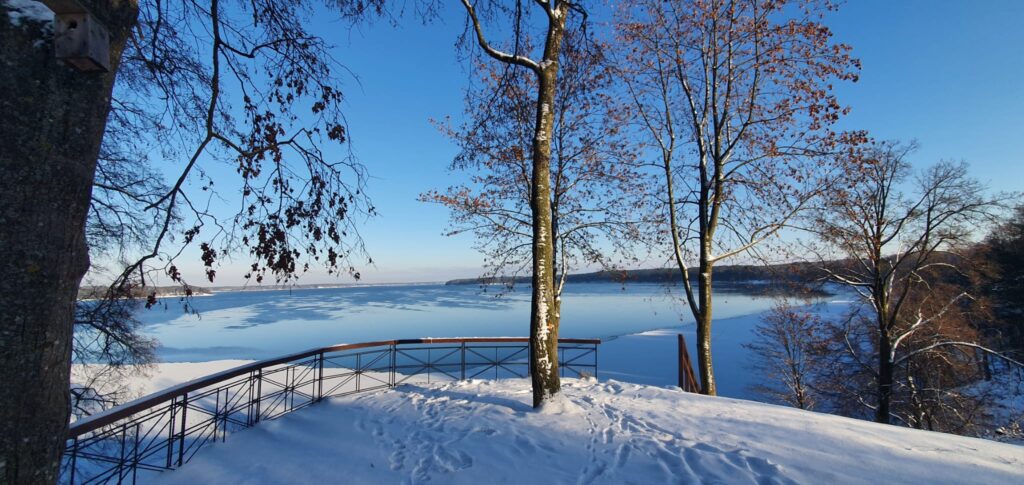
In Kaunas, a dynamic cultural revival awaits. The city’s role as a temporary capital during Lithuania’s interwar period paved the way for a renewed appreciation of national traditions. Witness the resurgence of Lithuanian culture, from art and literature to the preservation of language, all amid the historical landmarks that stand as witnesses to the nation’s journey.
For the best experience, consider visiting during the summer months. From late May to early September, the weather is pleasant, allowing you to explore the cities’ treasures comfortably. During this period, outdoor events, festivals, and cultural celebrations are in full swing, providing a vibrant backdrop to your exploration. Be sure to embrace the warmer months when the streets come alive with energy, giving you the opportunity to witness the heart and soul of Kaunas and Vilnius in full bloom.






